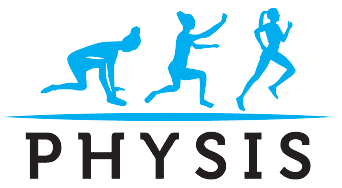Do you often find yourself experiencing muscle tension, headaches, or back pain? While there are a number of factors that can contribute to these symptoms, poor posture is often the main culprit behind muscle tension. In this blog post, we’ll explore why poor posture can lead to muscle tension and what you can do to improve your posture and reduce muscle tension.
What is Poor Posture?
Poor posture refers to the position of your body when you are standing, sitting, or lying down. When your body is in a position that puts excessive strain on your muscles and joints, it can lead to muscle tension, pain, and discomfort. Common examples of poor posture include slouching or hunching over, tilting your head forward, or standing with your shoulders rounded forward.
How Poor Posture Leads to Muscle Tension
When your body is in a position of poor posture, it can cause your muscles to work harder than they need to in order to maintain your body’s position. Over time, this can lead to muscle tension, which is a state of persistent contraction in your muscles. When your muscles are in a state of tension, they can become tight, sore, and painful.
For example, if you spend a lot of time sitting at a desk with your shoulders hunched forward, your chest muscles can become tight and your back muscles can become weakened. This can lead to muscle tension in your neck, shoulders, and upper back, which can cause headaches, neck pain, and back pain.
Improving Your Posture to Reduce Muscle Tension
Improving your posture is an important step in reducing muscle tension and improving your overall health and well-being. Here are some tips for improving your posture:
- Sit and stand up straight: When you are sitting or standing, try to keep your spine upright and your shoulders relaxed. Notice how we did not say spine straight and shoulders down. The reason being, you can end up overcompensating. A relaxed neutral spine often feels like you are getting taller instead of “straighter”. Similarly, relaxed shoulders should feel straight not high near your ears or “pushed down”.
- Use ergonomic furniture: Use a chair and desk that are designed to support good posture and reduce strain on your muscles and joints. Place the chair and desk at the appropriate height and distance.
- Take breaks: If you spend a lot of time sitting, take breaks every 30 minutes to stand up and stretch. During this time you can do stretches for the wrist, hamstrings, midback and back.
- Exercise regularly: Regular exercise, especially exercises that strengthen your core and back muscles, can help improve your posture and reduce muscle tension. Alternating between aerobic exercises, strengthening exercises and other forms of exercises like yoga and Pilates is excellent to avoid getting bored and getting a whole body exercise.
- Practice mindfulness: Being mindful of your posture throughout the day can help you make small adjustments to your position and reduce muscle tension. Learn to check in with your body to make sure you have awareness of yourself and your body.
Conclusion
Poor posture is a common problem that can lead to muscle tension, pain, and discomfort. By improving your posture and taking steps to reduce muscle tension, you can improve your overall health and well-being. If you are experiencing persistent muscle tension, it’s important to consult with a healthcare professional to determine the underlying cause and develop an appropriate treatment plan.



Comments are closed